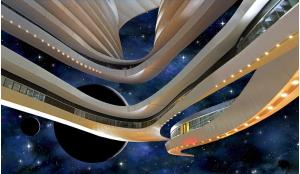Last year, China’s Chang’e 4 mission achieved humanity’s first soft landing on the far side of the Moon. It also attempted a first-of-a-kind biosphere experiment which has encouraged work on Earth that one day could aid the establishment of long-term settlements of humans beyond our planet. The authors discuss an experiment designed to understand the growth rate of cotton seeds in microgravity and their results.
Why grow anything on the Moon? Because the Moon is important in the ‘stepping-stone approach’ to future human space exploration missions beyond Earth, which will ultimately need to be self-sufficient. The use of cotton in clothing is well established, but cotton can also be used for medicinal purposes to treat, among other things, nausea, fever, headache, diarrhoea, dysentery, nerve pain and bleeding; as such it will be very useful to cultivate off-world.
Presently, there is a great deal of interest from government space agencies and private companies in lunar mineral resource exploration and extraction, as well as the establishment of Moon villages and Mars colonies to enable astronauts to spend extended stays on our nearest celestial neighbours.
If such ideas are implemented and humanity finds itself stationed on the Moon for prolonged periods of time, off-world settlers will need to find ways to produce essential agricultural products, as it will not be financially viable - either from a payload or propellant point of view - to frequently transport tons of cargo from Earth. The solution is to carry only the raw materials needed to cultivate plants in situ.
Gravity is a major factor in plant growth, so it is crucial to study planting techniques and plant growth in conditions that simulate different gravitational environments, which will help us to understand yield and increase our knowledge of the behaviour of plants.














